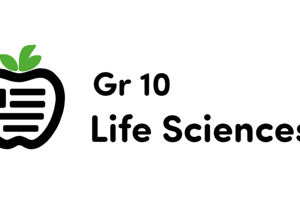Podcast
Questions and Answers
Meristematic tissue is responsible for generating new cells through cell division in plants.
Meristematic tissue is responsible for generating new cells through cell division in plants.
True (A)
Apical meristems are located in the middle of the stem and are responsible for lateral branch development.
Apical meristems are located in the middle of the stem and are responsible for lateral branch development.
False (B)
Root meristems play a role in anchoring the plant and maintaining stability during windy conditions.
Root meristems play a role in anchoring the plant and maintaining stability during windy conditions.
True (A)
Intercalary meristems are responsible for extending the length of internodes and increasing the distance between individual leaves.
Intercalary meristems are responsible for extending the length of internodes and increasing the distance between individual leaves.
Subapical meristems contribute to the complex structure of some plants like trees by promoting uniform branch growth.
Subapical meristems contribute to the complex structure of some plants like trees by promoting uniform branch growth.
Apical meristems consist of differentiated cells that can give rise to all other types of plant cells.
Apical meristems consist of differentiated cells that can give rise to all other types of plant cells.
Flashcards are hidden until you start studying
Study Notes
Plant Tissue: Understanding Meristematic Tissue
Meristematic tissue refers to the primary growth tissue in plants responsible for generating new cells through cell division. It is essential for plants' growth and development, providing them with the ability to regenerate and repair damaged areas. Different types of meristematic tissues exist, each playing a distinct role in the overall growth of a plant.
Apical Meristem
The apical meristem is located at the shoot and root tips, driving aboveground growth and determining the direction of the plant. It consists of undifferentiated cells that can give rise to all other types of plant cells, making this tissue particularly valuable in scientific research, such as plant cloning and genetic modification.
Root Meristem
Root meristems are responsible for the downward growth of the plant's taproot system, enabling the plant to access water and nutrients from the soil. They play a vital role in anchoring the plant and maintaining stability during windy conditions.
Subapical Meristems
Subapical meristems are present in axillary buds along the stem, promoting lateral branch development and biodiversity. These meristems ensure that new branches grow at varying angles, contributing to the complex structure of some plants like trees.
Intercalary Meristems
Intercalary meristems are found between nodes along the stem, extending the length of internodes and increasing the distance between individual leaves. This allows leaves to reach optimal positions for receiving sunlight, maximizing photosynthetic efficiency.
Totipotency and Pluripotency
Similar to animal stem cells, meristematic plant cells exhibit totipotency or pluripotency, meaning they can develop into any type of plant tissue. This property enables researchers to manipulate and generate various plant tissues and structures through tissue culture techniques.
In summary, understanding meristematic tissue is critical in comprehending plant development and adaptability. Its roles in growth, morphology, and resilience contribute to the overall health and success of a plant.
Studying That Suits You
Use AI to generate personalized quizzes and flashcards to suit your learning preferences.




